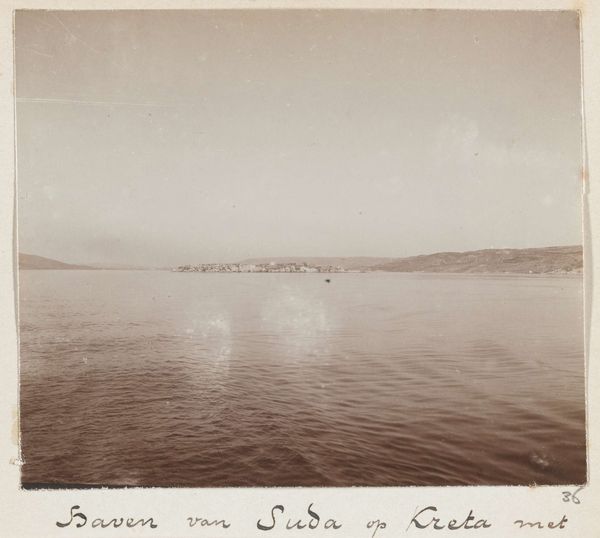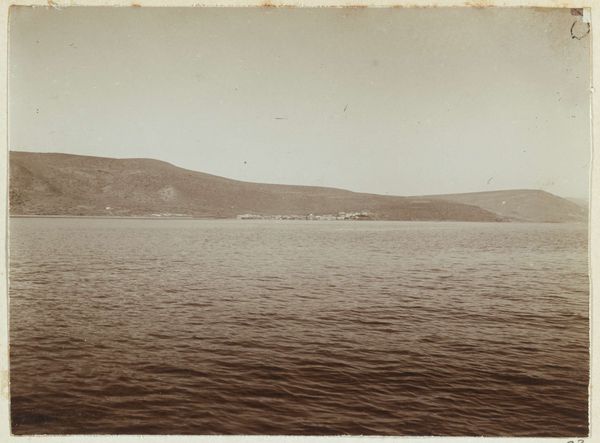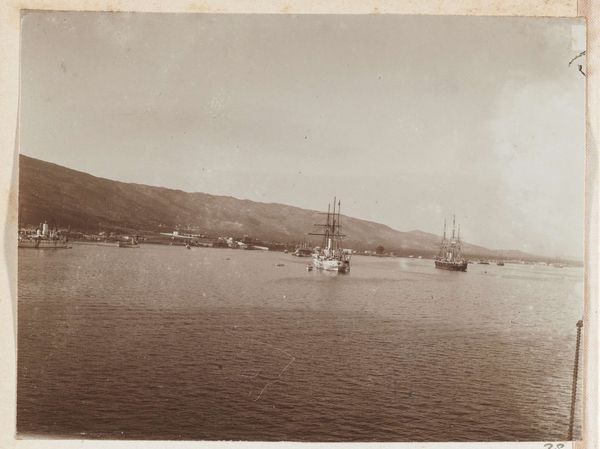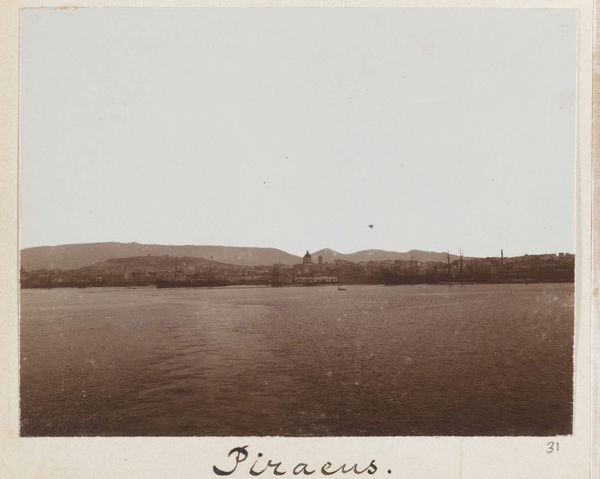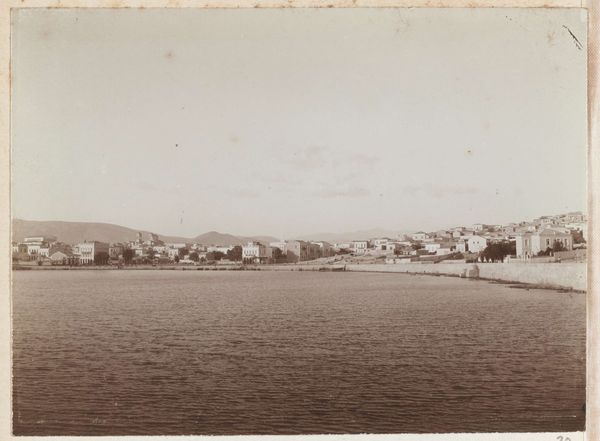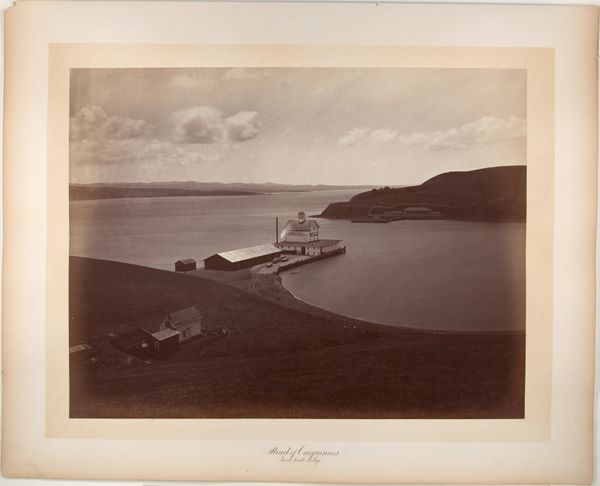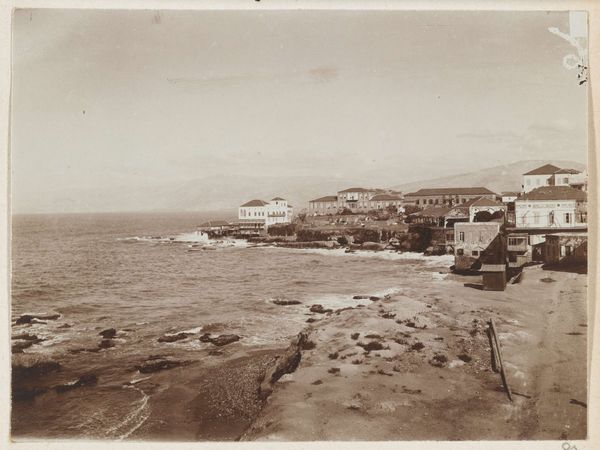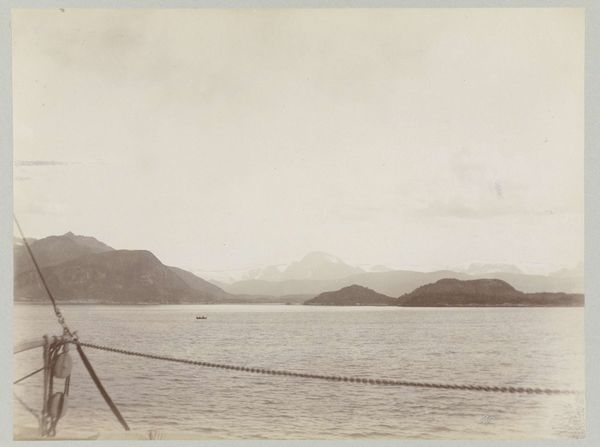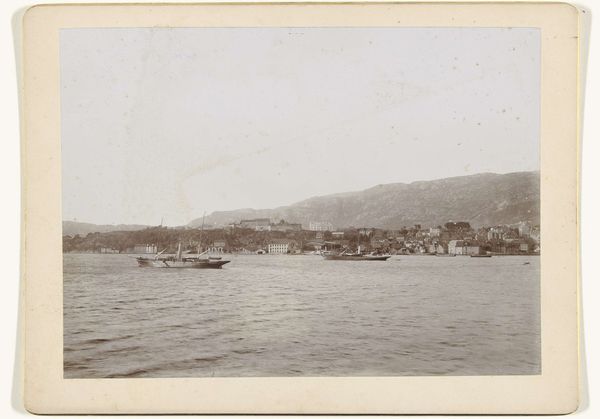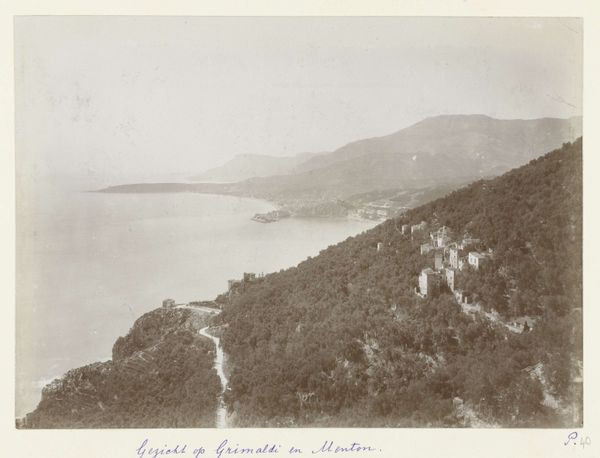
print, plein-air, photography
# print
#
plein-air
#
landscape
#
photography
#
watercolor
Dimensions: height 81 mm, width 109 mm
Copyright: Rijks Museum: Open Domain
Johannes Lodewijk Heldring made this photograph of the port of Piraeus, likely using a glass plate negative, and then printing it on an albumen-coated paper. Photography, even in its early days, represented a complex mix of art and industry. The glass plates had to be meticulously prepared, coated with light-sensitive emulsion, exposed in the camera, and then developed with chemical solutions. Skilled darkroom technicians, often working under harsh conditions, produced the final prints. The albumen paper itself was another layer of labor; egg whites were used to create a smooth, glossy surface for the image to adhere to. The sepia tones and the soft focus of the lens give the image a timeless quality, yet it's important to remember the human effort behind its creation. The photograph is more than just a captured moment; it’s a record of the industrial processes that made it possible. By considering the labor and the materials involved, we can understand the broader social context in which this image was produced.
Comments
No comments
Be the first to comment and join the conversation on the ultimate creative platform.
